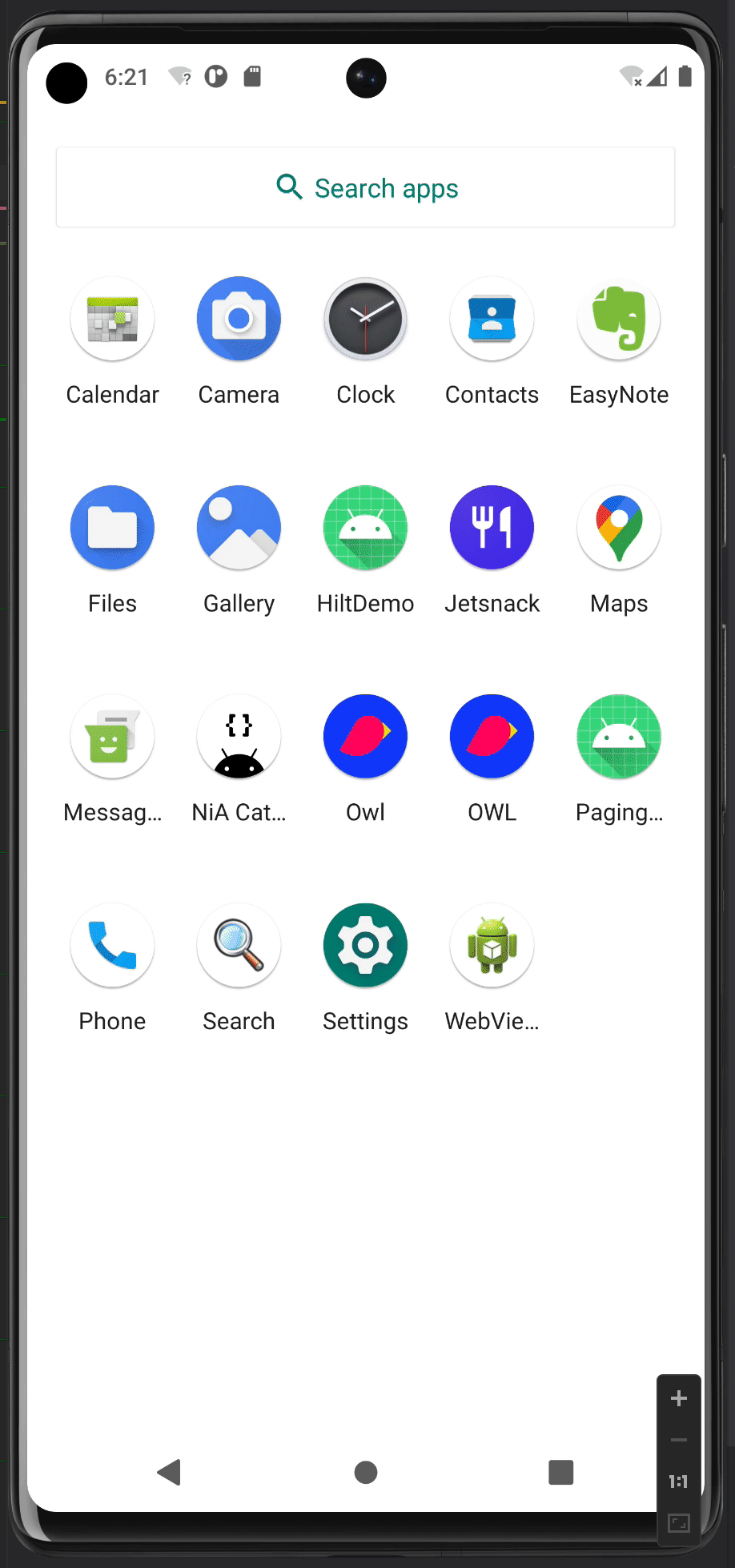Android Compose——Paging3的使用以及利用泛型进行封装
Paging3
效果视频

简述
本Demo采用Hilt+Retrofit+Paging3完成,主要为了演示paging3分页功能的使用,下列为Demo所需要的相关依赖
//retrofit
implementation 'com.squareup.retrofit2:retrofit:2.9.0'
implementation 'com.squareup.retrofit2:converter-gson:2.9.0'
//paging
implementation 'androidx.paging:paging-runtime:3.1.1'
implementation 'androidx.paging:paging-compose:1.0.0-alpha14'
//Dagger - Hilt
implementation("com.google.dagger:hilt-android:2.44")
kapt("com.google.dagger:hilt-android-compiler:2.44")
// Compose dependencies
implementation "androidx.lifecycle:lifecycle-viewmodel-compose:2.5.1"
implementation "androidx.hilt:hilt-navigation-compose:1.0.0"
// Coroutines
implementation 'org.jetbrains.kotlinx:kotlinx-coroutines-core:1.5.1'
implementation 'org.jetbrains.kotlinx:kotlinx-coroutines-android:1.6.4'
Hilt+Retrofit
访问接口
定义需要访问的接口,此接口是Github api,suspend字段用于提示后续引用,此内容需要在协程中使用
interface GithubService {
@GET("search/repositories?sort=stars&q=Android")
suspend fun queryGithubAsync(@Query("per_page")number:Int, @Query("page") page:Int):DetailsBean
}
网络实例
提供三个实例,最终外部需要引用的的为UseCase的实例,具体Hilt依赖注入此处不予说明,有意者可参考Hilt依赖注入
@Module
@InstallIn(SingletonComponent::class)
object AppModule {
const val BASE_URL:String = "https://api.github.com/"
@Singleton
@Provides
fun providerRetrofit():Retrofit{
return Retrofit.Builder()
.baseUrl(BASE_URL)
.addConverterFactory(GsonConverterFactory.create())
.build()
}
@Singleton
@Provides
fun providerGithubService(retrofit: Retrofit): GithubService {
return retrofit.create(GithubService::class.java)
}
@Singleton
@Provides
fun providerUseCase(service: GithubService):UseCase{
return UseCase(GetProjects(service))
}
}
在Hilt提供的实例中,UseCase中实现了访问网络接口的任务
data class UseCase(
val getProjects: GetProjects
)
class GetProjects(private val service: GithubService) {
suspend operator fun invoke(number:Int,page:Int): DetailsBean {
return service.queryGithubAsync(number, page)
}
}
PagingSource
我们主要实现load方法;其中page为当前内容页数,pageSize为每页需要加载的内容数量(可在外部进行定义),repository为获取的网络数据实体,previousPage为前一页,此处做了一个判断,如果为第一页时,则返回null,否则进行滑动至上一页;nextPage为下一页, LoadResult.Page为分页加载所需的内容; LoadResult.Error可捕获异常
class DataPagingSource(private val useCase: UseCase):PagingSource<Int,DetailBean>() {
override fun getRefreshKey(state: PagingState<Int, DetailBean>): Int? = null
override suspend fun load(params: LoadParams<Int>): LoadResult<Int, DetailBean> {
return try {
val page = params.key ?: 1 //当前页,默认第一页
val pageSize = params.loadSize //每页数据条数
val repository = useCase.getProjects(page,pageSize) //获取的数据源
val repositoryItem = repository.beans //获取的数据列表
val previousPage = if (page > 1) page - 1 else null //前一页
val nextPage = if (repositoryItem.isNotEmpty()) page+1 else null //下一页
Log.d("hiltViewModel","page=$page size=$pageSize")
LoadResult.Page(repositoryItem,previousPage,nextPage)
}catch (e:Exception){
LoadResult.Error(e)
}
}
}
ViewModel
在构造函数中调用Hilt构造的实例;其中getData方法为获取分页的数据,返回为Flow<PagingData<DetailBean>>类型,其中Flow<PagingData<...>>外部为固定写法,内部可根据需要自行定义,然后PagingConfig的配置中,我们需要配置pageSize和initialLoadSize,如果不定义后者,则通过每页内容数量会是pageSize的三倍,然后添加我们上述创建的PagingSource;最后转化为流,然后置于协程中,它缓存PagingData,以便此流的任何下游集合都将共享相同的数据
@HiltViewModel
class HomeViewModel @Inject constructor(private val useCase: UseCase):ViewModel() {
val PAGE_SIZE = 10
fun getData():Flow<PagingData<DetailBean>>{
return Pager(
config = PagingConfig(pageSize = PAGE_SIZE, initialLoadSize = PAGE_SIZE),
pagingSourceFactory = { DataPagingSource(useCase) }
).flow.cachedIn(viewModelScope)
}
}
View
获取ViewModel中的数据
val datas = viewModel.getData().collectAsLazyPagingItems()
同时如果需要添加底部刷新状态栏、数据错误等标识,需要监听loadState,其状态总共分为五种:
- refresh:第一次加载数据触发
- prepend:滑动上一页触发
- append:滑动下一页触发
- source:对应于[PagingSource]中的加载
- mediator:对应于来自[RemoteMediator]的加载
我们此处主要使用refresh和append;
其中,在refresh中进行监听,如果然后数据为null,则显示全屏错误提示,此处为第一次加载数据;
然后,在append中监听loading和Error两种状态,在其loading是显示底部加载状态,在Error中显示底部错误提示,此处不同于refresh的Error状态,因为有了数据,就不在需要显示全屏错误提示,在数据列表底部显示错误状态栏即可
@Composable
fun GithubList(viewModel: HomeViewModel = hiltViewModel()){
val datas = viewModel.getData().collectAsLazyPagingItems()
LazyColumn(
verticalArrangement = Arrangement.spacedBy(10.dp),
modifier = Modifier
.background(grey)
.fillMaxSize()
.padding(10.dp)
){
when(datas.loadState.refresh){
is LoadState.Loading-> {item { loading() }}
is LoadState.Error-> {
if (datas.itemCount <= 0){
item{
/**
* 全屏显示错误*/
failedScreen() {
datas.retry()
}
}
}
}
}
itemsIndexed(datas){ _, value ->
if (value != null){
GithubItem(value)
}else{
empty {
datas.retry()
}
}
}
when(datas.loadState.append){
is LoadState.NotLoading-> {}
is LoadState.Loading-> {
item {
loading()
}
}
is LoadState.Error-> {
if (datas.itemCount > 0){
/**
* 底部显示加载错误*/
item { failed(){datas.retry()} }
}
}
}
}
}
利用泛型封装一个通用的Paging
上述所阐述的内容是建立一个符合特定类的Paging,随着我们的接口增多,拥有不同的分页加载接口,显然,给每一个接口建立一个DataPagingSource不是最佳的方法,下列简述一种利用协程和泛型建立一种通用的Paging
封装DataPagingSource
下列和DataPagingSource和上述基本没有太大差距,变化在于,将特定返回的数据类型通过泛型代替,同时为了应对不同接口的传入,故定义一个block回调方法,其中拥有俩个形参(可以根据自己需求改变),此处我返回的是offset和limit
class BaseDataPagingSource<T:Any>(
private val block:suspend (Int,Int)->List<T>
):PagingSource<Int, T>() {
override fun getRefreshKey(state: PagingState<Int, T>): Int? {
return state.anchorPosition?.let { anchorPosition ->
state.closestPageToPosition(anchorPosition)?.prevKey?.plus(1)
?: state.closestPageToPosition(anchorPosition)?.nextKey?.minus(1)
}
}
override suspend fun load(params: LoadParams<Int>): LoadResult<Int, T> {
val offset = params.key ?: 0
val limit = params.loadSize
return try {
val response = block(offset,limit)
val previousPage = if (offset > 0) offset - 1 else null //前一页
val nextPage = offset + 1 //下一页
LoadResult.Page(
data = response,
prevKey = previousPage,
nextKey = nextPage
)
} catch (e:Exception){
LoadResult.Error(e)
}
}
}
封装Pager
同理,将建立的Pager也进行封装,将接口通过block引入,需注意的是block方法需要加suspend修饰,因为我们的接口一般同需要用suspend修饰,所以此处也需要声明,不然外面引用时会出现错误
const val PAGE_SIZE:Int = 20
fun <T : Any> creator(
pageSize: Int = PAGE_SIZE,
enablePlaceholders: Boolean = false,
block: suspend (Int, Int) -> List<T>
): Pager<Int, T> = Pager(
config = PagingConfig(
pageSize = pageSize,
enablePlaceholders = enablePlaceholders,
initialLoadSize = pageSize
),
pagingSourceFactory = { BaseDataPagingSource(block = block) }
)
运用
在ViewModel中我们可以定义一个如下方法,以供外部调用,以最后一行作为结果传入上方的BaseDataPagingSource的LoadResult.Page 中
fun getSearchSongResult(keywords:String) = creator { offset, limit ->
val response = service.getSearchSongResult(keywords = keywords,offset = offset*limit,limit = limit)
response.result.songs
}.flow.cachedIn(viewModelScope)
在外部就和普通调用一致,之后就可以将数据插入列表组件中
val songs = viewModel.getSearchSongResult(value.keyword).collectAsLazyPagingItems()
更多推荐
 已为社区贡献2条内容
已为社区贡献2条内容






















所有评论(0)